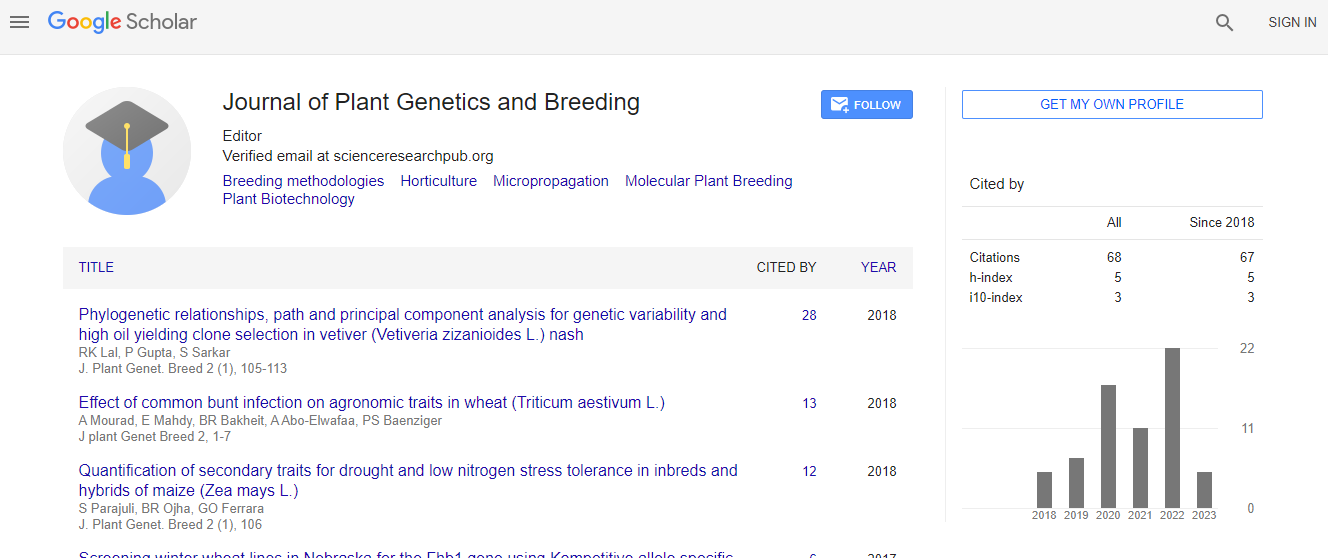Selection for yield improvement In Bambara groundnut
*Corresponding Author:
Copyright: © 2021 . This is an open-access article distributed under the terms of the Creative Commons Attribution License, which permits unrestricted use, distribution, and reproduction in any medium, provided the original author and source are credited.
Abstract
The potential yield of crops is diminished by biotic and abiotic stress, therefore constant crop improvement is indispensable for sufficient and secure yields in crops both for now and in the future. The various methods used in crop breeding to improve crops can be categorized into four; selection of plants based on observed natural variations existing among native plants, or landraces or accessions, selection of plants with desirable traits after hybridization or controlled mating from different parents, selection of specific recombinants after monitoring the inheritance of within-genome variation, and the creation and introduction of novel variation into genomes through genetic engineering. Summarily, the core of plant breeding is the selection of better types among variants based on defined goals; like yield and quality of edible parts; ease of cultivation, harvest, and processing; tolerance to environmental stresses; and resistance against pests and diseases (Breseghello and Coelho, 2013).
Selection is one of the scientific methods of crop improvement. In fact, cultivated crops emerged from several cycles of both natural and artificial selection (Chahal and Gosal, 2002; Goussard, 2004; Uguru, 2005). Sometimes, selection of plants based on observed variants is the only readily available strategy for improvement of plants, especially for extreme inbreeders; autogamous crops with flowers that are cleistogamous in nature, as other breeding methods are either not feasible or practicable. However, this breeding method is not fascinating as it does not create variability but only act on the natural existing variation. Furthermore, the efficiency of this breeding method depends on the amount of observable genetic variation existing in a population like, individual differences in viability, adaptability, resistance to diseases and pests, large fruit size and other selective values of the breeder; which usually is to select line(s) with good agronomic characters than others. Worse still, some of these traits are environment specific, making this crop improvement method unreliable.
Till date, Bambara groundnut is cultivated in the form of landraces. It is an extreme autogamous crop (Baudoin and Mergeai, 2001) with cleistogamous flowers (Cobble and Steele, 1976; Tindall, 1983). Several workers reported that successful hybridization between lines of Bambara groundnut through conventional breeding has not been achieved (Marandu and Ntundu, 1995; Ntundu, 1997; Massawe et al., 2005; Uguru and Agwatu 2006). According to kone et al (2007) the improvement of Bambara groundnut through convictional breeding method is slow and difficult due to the long generation time and preponderant homozygous nature of the crop. Similarly, Goli et al (1995) observed that geotropic pod development of the crop makes its improvement through artificial hybridization difficult. Hence, the readily available improvement strategy therefore is to apply selection on the already existing variations. However, in order to arrive at a conclusion with a high precision for such an important trait as yield, it is important that many accessions especially those collected from different eco-geographic regions be used in the study. This would be significant in not only capturing variability for a specific trait (like yield) but also in selecting the right parent from a wide range of collections for yield improvement in Bambara groundnut. Therefore, this study was specifically set up to improve yield in Bambara groundnut through selection.

 Spanish
Spanish  Chinese
Chinese  Russian
Russian  German
German  French
French  Japanese
Japanese  Portuguese
Portuguese  Hindi
Hindi 